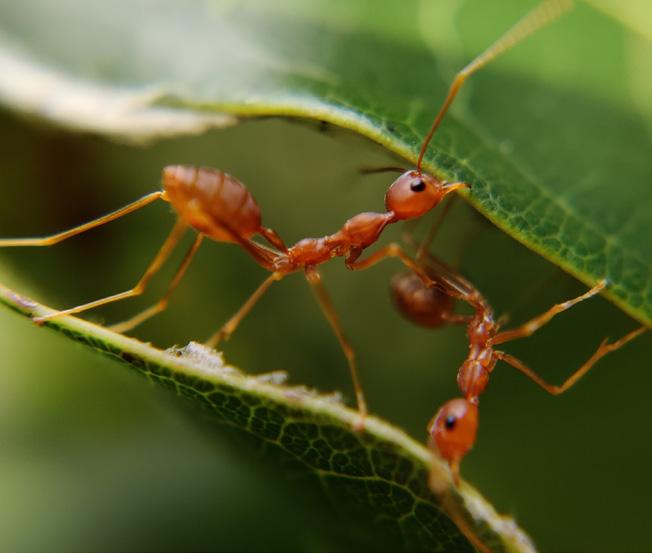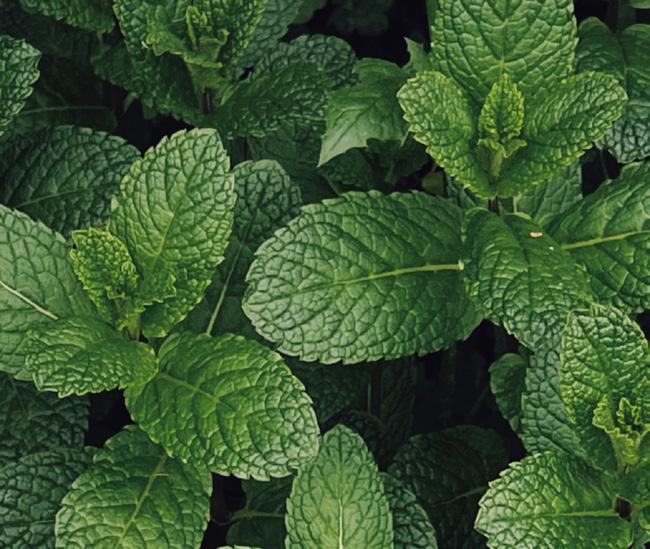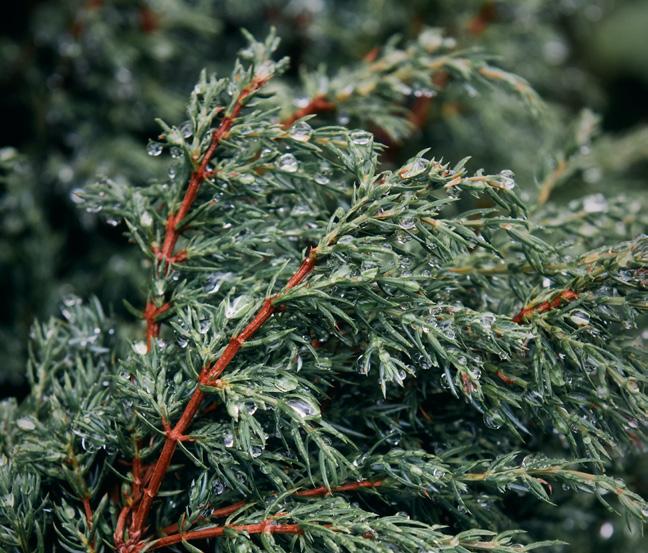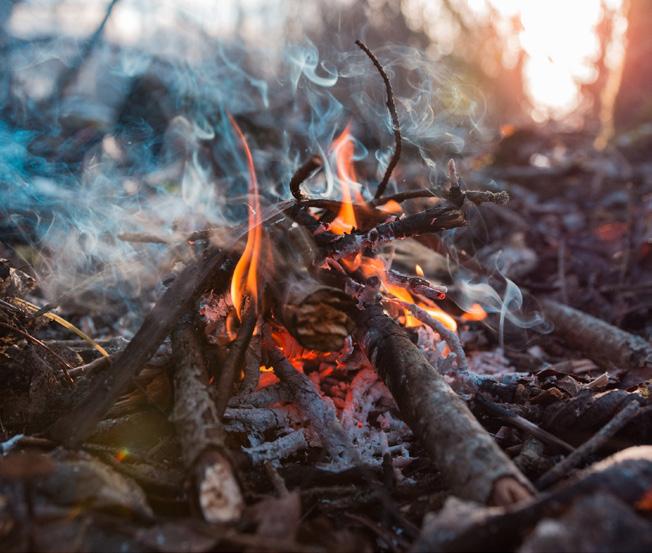
10 minute read
SUMMER SURVIVAL SERIES: DON’T BE BUGGED!
While the great outdoors is arguably at its most enjoyable in the summer months, the warmer weather does come at the cost of unwanted nuisances that seek us out and clamor like rock star groupies everywhere we go, especially anywhere there is grass—tidy or not—trees, water, and…well, just about everywhere. Oh yes, we’re talking about bugs.
Preventions
Advertisement
You can keep yourself, your vehicle, your home, and your camp as pristine as a military barracks before an officer’s inspection and still have insect invaders, but there are some things you can do to minimize the numbers.


For interiors, check your doors and windows for gaps; also check for holes or tears in door and window screens. Insects can make entry through the tiniest cuts and cracks, so patch or seal any you find. Inspect caulking and repair or reapply as necessary. Check around all plumbing fixtures and pipes for dampness or leaks. These are also ideal places to treat with repellents we’ll detail further in.
Even if you consider your kitchen to be clean and orderly, go through all food storage areas and make sure containers are securely sealed and wiped clean of drippage residue. Items that cannot be totally sealed up should be put in containers with lids or Ziplock bags or airtight plasticware. Dry food items, such as cereal, rice, flour, sugar, pasta, etc., are best stored in tight-fitting jars. Consider rearranging any bags, boxes, or other containers that are stored close together. Bugs like tight, dark places. Wipe down the insides and outsides of cabinetry; a water-and-vinegar solution works well. This mixture is also good for cleaning floors. Placing bay leaves on the shelves and inside drawers works as a repellent.

Don’t overlook pet food and water dishes; keep food bowls washed and dried when empty.
The outside is more of a challenge, especially since you can only control so much. But there are still steps you can take.
Around your home, eliminate all sources of standing water, which not only draws insects of all kinds but results in mosquito and fly infestations. Wood piles should stacked away from your house. Keep trash receptacles completely covered, washing them out periodically. Shrubbery should be low when possible and trimmed; ideally, bushes should not be up against the sides of your house. Keep leaves cleared, grass cut and weeded. If you’re going to be relaxing on your patio or deck, light citronella candles or torches.
Plantings that repel insects and, in some cases, snakes, include: holly, marigolds, allium (also known as flowering onion), lemongrass, motherin-law’s tongue (or snake plant), wormwood (or mugwort), pink agapanthus, flowering garlic, snakeroot, yellow alder, basil, chives, and varieties of cactus. Ants are also repelled by anise, catnip, chrysanthemum, mint, pennyroyal, hot peppers, sage, lemon thyme, rosemary, nasturtiums, and tansy.

If you’re hiking or camping, the most obvious protection is covering up when you’re going to be in tall vegetation or woods or around water, wearing light-colored clothing and not wearing any scented products.

There are many natural or organic ways to repel or deter insects. Some that are effective include oils, such as peppermint, spearmint, citronella, lemon eucalyptus, lemongrass, cedarwood, lavender, tea tree, and catnip. A good way to use these is to blend with a base or carrier oil, such as almond, olive, or coconut. You can make your own on the cheap, but if you prefer a ready-made product, look for those labeled 100% natural; a popular one contains some of the aforementioned oils as well as cinnamon, bay, caraway, rose geranium, lemon, and sweet almond oil.


For applications outside—around the yard, garden, campground, etc.—mix the oils with distilled water and add a little bit of alcohol or witch hazel to emulsify. As some oils are harmful or toxic for pets, avoid using in areas where they will be.
Peppermint oil works well for fleas, moths, flies, fruit flies, wasps, gnats, spiders, ants, beetles, cockroaches, and even bed bugs. Lemongrass, which contains citronella, works for mosquitoes, gnats, fruit flies, fleas, ticks, and chiggers. Cedarwood is a naturally moisture-leaching agent that dries out insects and is effective with mosquitoes, flies, moths, fleas, ticks, lice, ants, mites, and silverfish. Lavender is not only a good repellent but also has anti-inflammatory properties that help to soothe and heal insect bites; it works well on mosquitoes, ticks, fleas, spiders, ants, fruit flies, lice, gnats, and bed bugs. Tea tree oil has antimicrobial, antiseptic, and anti-inflammatory properties and is effective against mosquitoes, bed bugs, dust mites, lice, ticks, bees, ants, and spiders. Catnip, also known as catmint, repels flies, mosquitoes, and some other biting insects.
Mixtures
Lemon eucalyptus: Combine a half cup of water and half cup of witch hazel and/or vinegar, adding thirty to forty drops of the lemon eucalyptus oil. This is a great household cleaner, too, but is potent and not beneficial for children or pets.
Citronella oil: Combine the water and witch hazel/vinegar amounts (you can also use alcohol or even vodka) with a few drops of the oil. Shake before spraying and be careful around your eyes.
Lavender oil: This can be added to other mixtures that use citrus, neem, lemon eucalyptus, cedarwood, or cloves to make for a nicer smell.
Cedarwood oil: Can be used by itself or added to citrusy sprays.

Cloves oil: This is also a good additive to enhance the repellents of other sprays.
Peppermint oil: While one of the best repellents, it also has the benefit of smelling good.
Lemon juice with garlic: Garlic has long been known as a natural insect and animal repellent due to a compound called allicin in the garlic. Added to the acidic lemon, it is even more effective. A recommended way to prepare this mixture is to crush some garlic cloves and soak in mineral oil overnight, then mix the oil with water and a few teaspoons of lemon juice. Shake well.
Tea tree oil: Equal parts water and vinegar with equal amounts of lavender and tea tree oil; twenty-five to thirty drops of each to two pints of the water and vinegar mixture.
Minimizing Bugs In Wilderness Shelters
You’ve got a leg up if you’re camping with a tent that zips up, but what can you do if you’re roughing it, either by choice or by circumstance?

Set up your shelter as far from water as possible. So many insects, but especially mosquitoes, gather around water. Keeping a fire with smoke is a big help to keep away flying bugs, especially when you have natural repellents to burn.

When constructing your shelter, get off the ground, whether by making a platform or setting up in a tree. If you’re using tree boughs, limbs, leaves, and fronds, be sure to thoroughly shake them out to ensure they are free of insects, larvae, eggs, webs, and nests. Ideally, you’ve found one of the natural repellents in your area and can spread some around your bedding. Cedar (the green needles, not the bark), sage, or lavender are good to use in a process called smudging. For this, you build a small fire with just enough kindling to keep it burning and produce smoke. If you are going to smoke or smudge the inside of your shelter, make the fire in a fire-safe container, such as a metal or ceramic bowl, but always have water close by. The idea is to smoke up the confines of your shelter, put the fire safely out or move it outside, let the smokiness dissipate so you’re not directly breathing it. It’s crucial that you keep the fire low and smoldering, not burning with enough vigor to burn up your shelter!




Always check shoes, socks, and articles of clothing that have been laying around. ALWAYS. To not do so is a good way to be bitten or stung. Spiders, snakes, and scorpions tend to tuck themselves inside or underneath items left unattended.
Whenever you are around any kind of vegetation, low or high, bushes and trees, you would be well advised to check for ticks frequently. In addition to causing uncomfortable, even painful bites, they transmit many diseases, some of which—like Lyme—can be serious, chronic, and even life-threatening. If you find any ticks, make sure you remove them completely, with tweezers or by hand, pinching the skin if necessary. Extract the tick as close to its attachment as possible, pulling out firmly so as not to leave any part embedded. Clean and disinfect the bite with alcohol or soap and water. Do not use any of the old folklore methods for smothering or burning them; not only are these tactics typically ineffective, they prolong the removal process and, in the case of burning, could cause injury.
Chiggers are tiny mites, too small to see, found in damp and swampy areas and around ponds, lakes, and rivers and, while they don’t cause disease, their bites do cause intensive itching. If you feel itchiness or start to notice red, swollen pinprick bites, remove your clothing and dry it out by a fire—dry being the operative word as dry heat will kill the larvae.
If you have nothing else, one of the oldest methods of protection is also the simplest… mud. Not only does it deter bugs, it helps hide your scent and is good camouflage.
Recognizing And Treating Bites
Most of us know what mosquito bites look and feel like, but many of the others may be difficult to differentiate. Ant bites are usually in clusters, red and swollen and painful. These can cause an allergic reaction, especially if from fire ants, so medical attention may be required. Flea bites are similarly found in clusters, but usually on lower legs and feet; they are also red and itchy but swell into a wider halo. Tick bites can look like a bullseye with a dime-size center and, while some are not overly itchy or painful, can cause burning, rashes, and blisters; they are typically singular. Spider bites are designated by double puncture marks; most will cause some redness and discomfort but are generally not serious, with the exception of bites by brown recluse or black widows. If you suspect you have been bitten by either of these, you should seek medical attention. Bee and wasp stings generate large, swollen red areas, and are almost always very painful. Though insect bites are, for most, an unpleasant affair but not dangerous, for some people they can be a life-threatening emergency. For that reason, it’s important to know if you or anyone in your group is allergic and carry an Epi-pen.

Natural treatments include some of the aforementioned repellent oils of peppermint, tea tree, and lavender; baking soda, vinegar, oatmeal, teabags, and honey from the pantry; and, in the wild, thyme, basil, aloe vera, echinacea, jewelweed, and broadleaf plantain. Ice or a cold pack, if you have it, will numb itching, reduce swelling, and decrease the release of histamine. If you have a first aid kit (and of course you should!) disinfect bites and apply cortisone cream. You can get more relief from ibuprofen and antihistamine, such as Benadryl.

Mosquitoes are a major nuisance if not a minor annoyance to living out of a tent in a patch of woods. Store-bought bug repellents tend to have strong, unpleasant odors that can aggravate asthmatic problems and other lung disorders. They also contain unhealthy chemicals and cost money that could be spent on food and bottled water. Mosquitoes are attracted to sweat and body odors and the invisible carbon dioxide that we exhale. They might also be attracted to the color blue and bright clothing.
The oils detailed above can be rubbed on your skin and clothing; also, citrus peels can be rubbed on as you burn lantana leaves, dog fennel plants, and termite mounds in the campfire. You can rub dog fennel stalks, wax myrtle leaves, and other wild plants on your exposed skin and clothing.

Here in the southeast, there is a native plant found throughout fields, woods, and roadsides called beautyberry or calicarpa americana. The pink berries, though edible, are not at all tasty to most palates, but the leaves can be rubbed all over your clothing and skin to repel mosquitoes (for some people) about as effectively as any store-bought Deet-containing repellent. I always rub the leaves on me before hiking through the swampy trails and even put leaves in my pockets and under my hat. Even though I have found them in abundance in deep woods, I feel that having some on hand to rub on me if I sweat too much is comforting. presence is building, look for the wax myrtle. This is a commonly found native plant in the south and some other regions of North America. It has a shiny leaf, and in the late summer has small berries close to the stem that are important for migratory birds, such as tree swallows. The myrtle can be utilized by collecting the leaves and crushing them, massaging the oils from the leaves into your hands and then applying it to your skin. Never put your hands in your eyes or other sensitive areas after you apply the wax. Wash your hands with some mud and rinse thoroughly to clean them of the oil.

Another thing one can do around the camp is put other leaves with strong odors like sage, rosemary, eucalyptus, bay, and camphor into the campfire. I don’t suggest using a smoky fire by tossing any old leaves and brush on the fire if one is then forced to breathe near it. A smoky fire is a good way to let people in the area know you’re there if you are lost, but not a good idea if you’re trying to keep a low-profile and hidden from prying eyes. Breathing smoke (directly) from a smoky campfire isn’t good for your general health, and if you have respiratory conditions you’d be better off using alternatives to fire for repelling mosquitoes from your camp.
Long-sleeve shirts and long pants are a must in this situation. I would never wear shorts for hiking as I see so many others do. I don’t stay on open trails anyway, so thorny vines and spiky plants can be a hazard with or without long pants, but more so in shorts, of course.
Additionally, the wax myrtle stems and leaves can be added to your fire to create a smoke that will help deter insects, such as mosquitoes and no-see-ums. If you’re sleeping outdoors, line the area with boughs from the wax myrtle, which will help keep insects at bay.
Mark Hamilton Quinn On Wax Myrtle
If you’re ever visiting humid locales in the warmer seasons, try to get out early in the morning because the rains will inevitably come in the afternoons as the heat climbs. If you’re caught in an outdoors location where a buggy

Insect bites and stings can be alleviated by the use of meat tenderizer, vinegar, and a white onion cut in half. These will draw out the toxins; then apply mud and let it dry. If you are fortunate enough to be in an area that has aloe vera, you can apply that to your wound the following day.
Insects will always be around to bug us, but some planning and precautions can help keep them under control.













